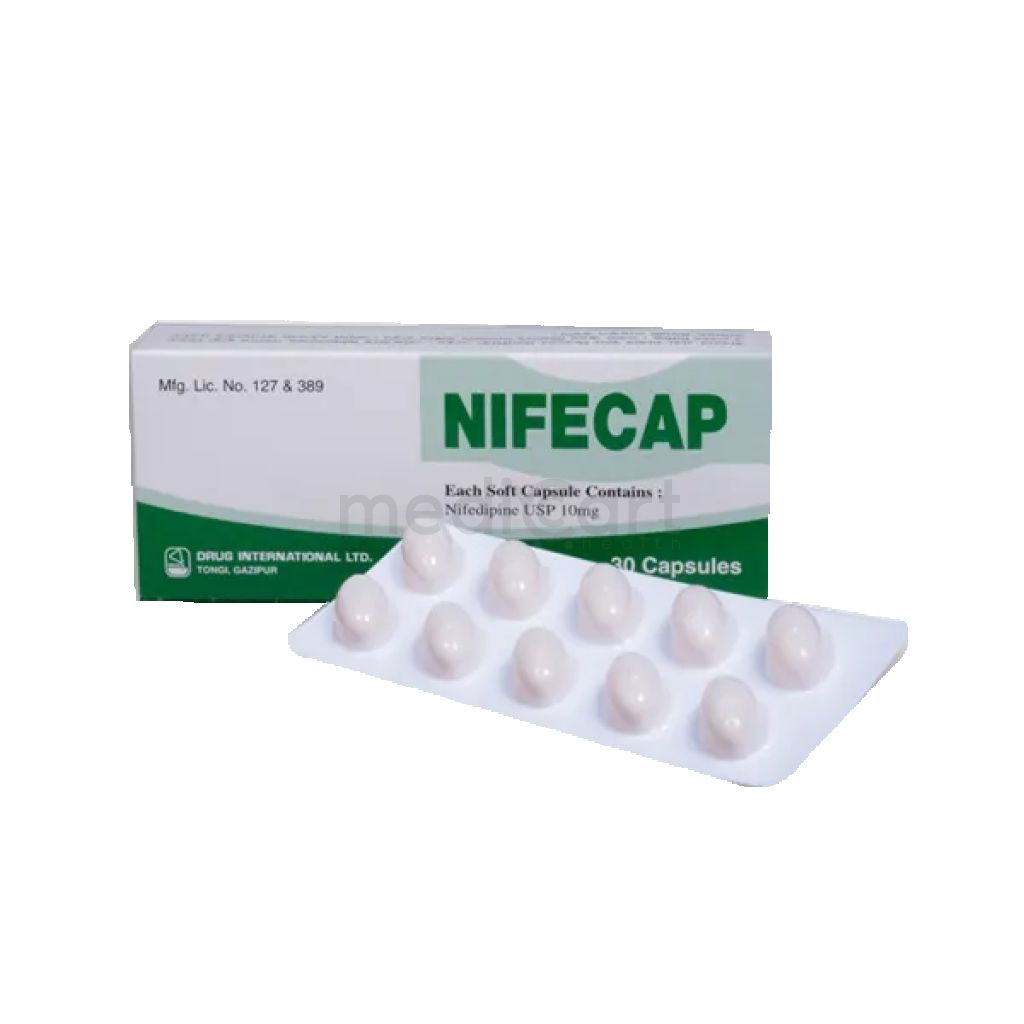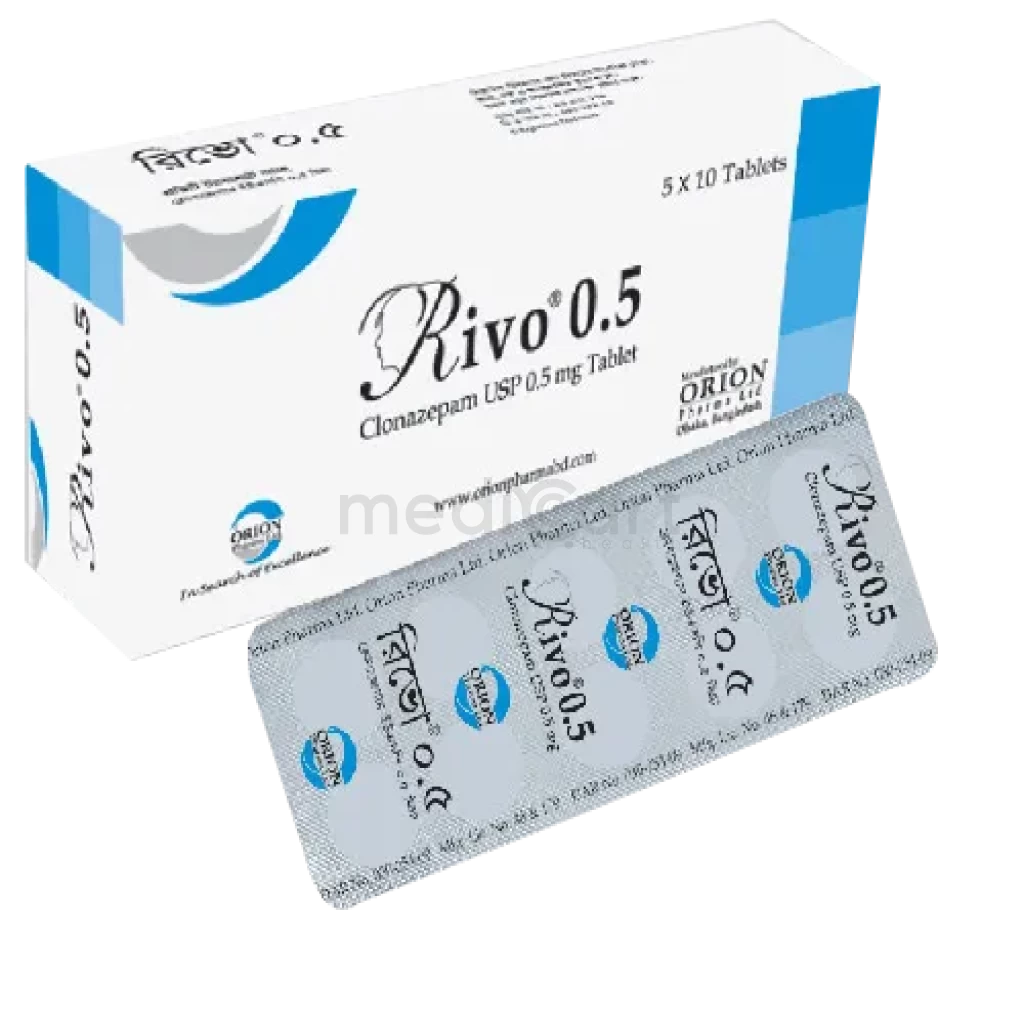

Best Price *
TK
23.00
* Delivery will be done in Dhaka city only.
Alternative Product
More Information About - Nifecap 10
Description
Generic Name
NifedipinePrecaution
Patients w/ hypotension, poor cardiac reserve, heart failure, severe aortic stenosis, DM, underlying severe GI narrowing (extended-release tab). Avoid abrupt withdrawal as it may casue rebound angina. Hepatic impairment. Elderly. Pregnancy and lactation. Patient Counselling Discontinue if ischaemic pain follows after admin. Monitoring Parameters Monitor BP, heart rate. Lactation: Drug is distributed into breast milk; manufacturer suggests discontinuing drug or refraining from nursing (however, American Academy of Pediatrics states that drug is safe for nursing)Indication
Hypertension, Angina pectoris, Raynaud's syndrome, Stroke preventionContra Indication
Acute MI, cardiogenic shock, acute unstable angina, treatment of anginal attack in chronic stable angina.Dose
N/ASide Effect
>10% Peripheral edema (10-30%),Dizziness (23-27%),Flushing (23-27%),Headache (10-23%),Heartburn (11%),Nausea (11%) 1-10% Muscle cramps (8%),Mood change (7%),Nervousness (7%),Cough (6%),Dyspnea (6%),Palpitations (6%),Wheezing (6%),Hypotension, transient (5%),Urticaria (2%),Pruritus (2%),Constipation (<2%),Chest pain (<2%) Frequency Not Defined Gingival hyperplasia,Agranulocytosis,Erectile dysfunctionPregnancy Category
Name : C
Description
Animal reproduction studies have shown an adverse effect on the fetus and there are no adequate and well-controlled studies in humans, but potential benefits may warrant use of the drug in pregnant women despite potential risksMode of Action
Nifedipine prevents Ca ion from entering the slow channels of cardiac and smooth muscles during depolarisation, producing peripheral and coronary vasodilatation. It reduces afterload, peripheral resistance and BP; increases coronary blood flow and causes reflex tachycardia. It has little or no effect on cardiac conduction and rarely has negative inotropic activity.Interaction
Enhanced antihypertensive effects w/ other antihypertensives, aldesleukin, and antipsychotics. Concomitant use w/ fentanyl during surgery caused severe hypotension. May modify insulin and glucose responses. Attenuation of tachycardic effect when used w/ benazerpril. Prothrombin time may be increased w/ coumarin anticoagulants. Increased serum levels w/ CYP3A4 inhibitors (e.g. azole antifungals, cimetidine, erythromycin, HIV-protease inhibitors, nefazodone, fluoxetine, quinupristin/dalfopristin). Potentially Fatal: Decreased bioavailability and efficacy w/ strong CYP3A4 inducers (e.g. rifampicin, phenytoin, carbamazepine).Pregnancy Category Note
N/AAdult Dose
Oral Hypertension Adult: Immediate-release: Initially, 5 mg tid. Maintenance: 10-20 mg tid. Extended-release: Initially, 10-40 mg bid, or 20-90 mg once daily. Angina pectoris Adult: Immediate-release: Initially, 10 mg tid. Maintenance: 10-20 mg tid. Extended-release: 10-40 mg bid or 30-60 mg once daily. Raynaud's syndrome Adult: Immediate-release: 5-20 mg tid. Elderly: Dose reduction may be necessary. Hepatic impairment: Dose reduction may be necessary.Child Dose
N/ARenal Dose
N/AAdministration
Immediate-release: May be taken with or without food. Avoid grapefruit juice. Retard, GITS & OROS: May be taken with or without food. Avoid grapefruit juice. Swallow whole, do not chew/crush.Disclaimer
The information provided herein are for informational purposes only and not intended to be a substitute for professional medical advice, diagnosis, or treatment. Please note that this information should not be treated as a replacement for physical medical consultation or advice. Great effort has been placed to provide accurate and comprehensive data. However, Medicart along with its authors and editors make no representations or warranties and specifically disclaim all liability for any medical information provided on the site. The absence of any information and/or warning to any drug shall not be considered and assumed as an implied assurance of the Company.





